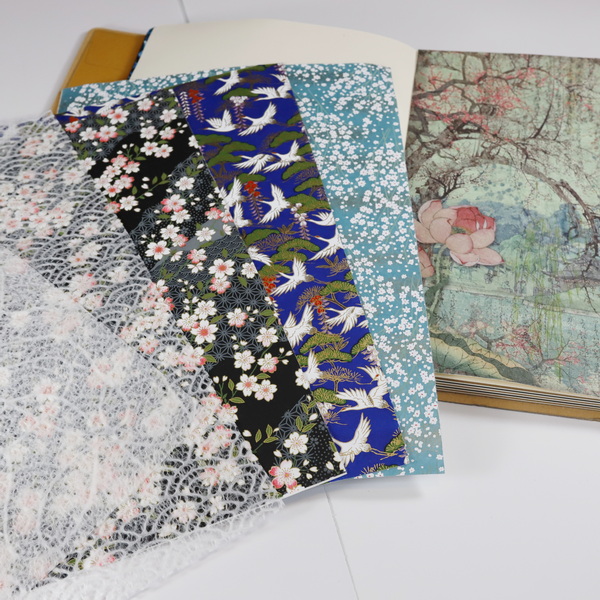
Wild and Wonderful Art Journal Papers: An Exploration into Japanese Paper
There are so many unique art journal papers that I like to use in my creative projects and Japanese paper is one of my favorites. As much as I love my paints and mediums, I get just as excited about good quality paper. Using Japanese paper in collage and creative projects can add unique designs and textures to your pages. Today I’d like to share with you why I love Japanese paper and why you might want to try these unique art journal papers on your next project.
Why Use Japanese Paper?
If you want to create a unique look on your next art journaling project, try Japanese paper. This paper is very strong and comes in a range and colors and patterns that inspire the imagination.
Japanese Paper- Washi or Rice Paper?
Japanese paper often goes by several different names. Traditional Japanese paper is also known as washi paper. In Japanese “wa” means Japanese and “shi” means paper.
Sometimes people refer to Japanese paper as “rice paper” but this term is misleading. Traditional Japanese paper are made from fibres of plants and bushes and are not made from rice.
Types of Japanese Paper
Most traditional Japanese paper are made from 3 different materials; kozo, gampi and mitsumata.
Kozo, also known as the mulberry bush, is the most common type of Japanese paper. This paper has long fibres and is very strong even when wet. It is easily cultivated in fields making it easier to harvest and use for making paper.
Gampi is another plant used for making traditional Japanese paper. As it is difficult to cultivate, it is often harvested in the wild. The fibres form a very crisp and smooth surface. The gampi paper is less readily available than Japanese paper made with kozo.
Mitsumata, also known as Edgeworthia Chrysantha, or the Oriental Paper Bush is also used for making Japanese paper. This paper is known for its warm tone and high absorbency.
What Makes Japanese Paper Unique?
Traditional Japanese paper is unique because it is made using traditional processes. Creating Japanese paper is a very laborious process that includes steaming, separating layers of bark by hand, rinsing and sun bleaching. As these papers are extremely labor intensive to make, they are generally made in smaller quantities.
The surface of the Japanese paper has a different texture and weight. Even between types of Japanese papers, there are variances. When using these as art journal papers, this creates some very exciting and interesting possibilities in the creative process.
My Favorite Types of Japanese Paper
Chiyogami
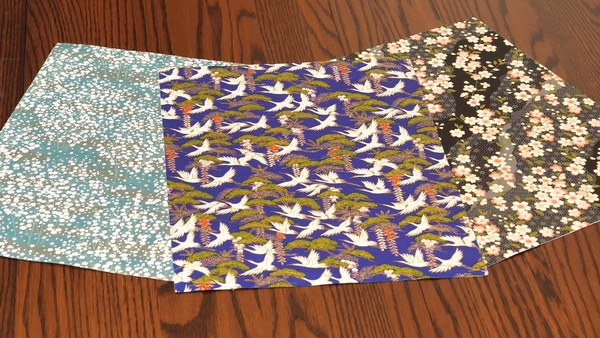
These vibrant colored papers are hand-printed using silk screening techniques. Each color is applied using a separate screen. This means that depending on the complexity of the pattern, a screen could be applied 6, 12 or more times to get the color range of these prints.
I love these papers because they are strong and vibrant, making them a favorite for book binding and other mixed media projects.
Japanese Tissue Weight Paper
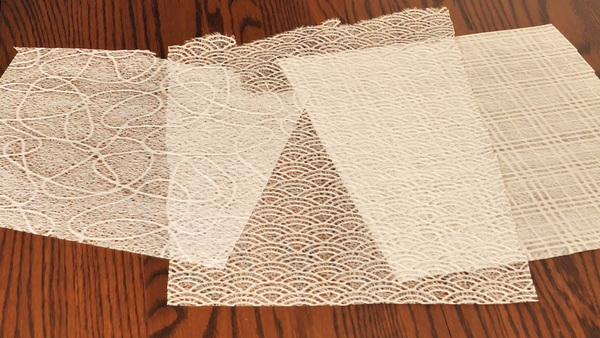
I love the beautiful patterns on these tissue weight papers as they are perfect for adding layers to the art journal. Even though these papers are lightweight, they are extremely strong. As they do not tear easily, they work great with mediums in the art journal.
These papers come in both colored variations and white. When using white tissue weight paper, they can be easily collaged to add white highlights and textures to the page. They can also be colored with watercolor and other mediums to add both color and texture to a project.
Commercial Printed Japanese Papers
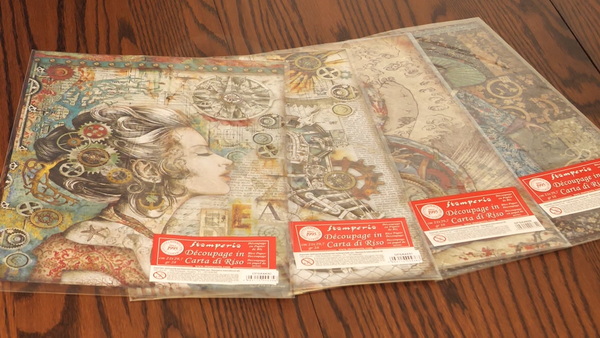
There is a variety of commercially printed Japanese papers. They are often marketed as rice paper and still have the beautiful texture of Japanese papers. The images printed on these papers are not nearly as vibrant as the traditional Japanese papers, but they are at a lower price point and have a variety of images. Brands such as Stamperia, Studio Light, Ciao Bella all have their own images printed on this Japanese paper.
Tomoe River Paper
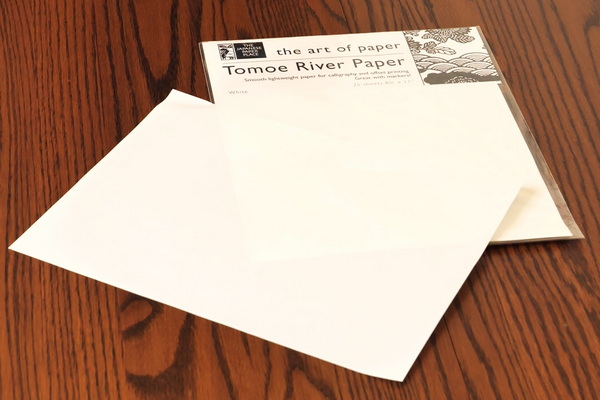
Tomoe River Paper is another Japanese paper that I have been experimenting with. This paper is made from trees in sustainable forests and is a very thin and smooth paper. Unlike traditional Japanese papers, this paper is machine made.
Tomoe River paper is predominantly used for calligraphy and it is crisp and smooth. I tried using this paper with matte medium but did not get good results. The wet medium creates wrinkles, and I didn’t like the effect. This paper is meant for writing and calligraphy and if used for this purpose, you will get excellent results.
How to Use Japanese Papers
There are so many ways that you can use Japanese papers on your projects. They can be main imagery, subtle layers and textures that are colored, or a surface that you write, draw or paint on.
Tearing Japanese Papers
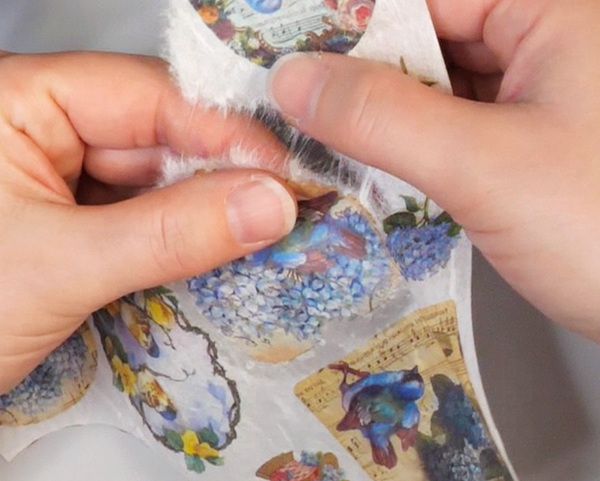
If you try to tear Japanese papers you will find it difficult to separate. Also as you tear you will end up with long fibers along the edge.
To get less of the long fibers, use a brush to add water around the edges of the image, then gently tear. This is a much easier way to separate the papers to add them to your projects. Also, the white areas will disappear when you add matte medium to the journal page.
Adhering Japanese Papers
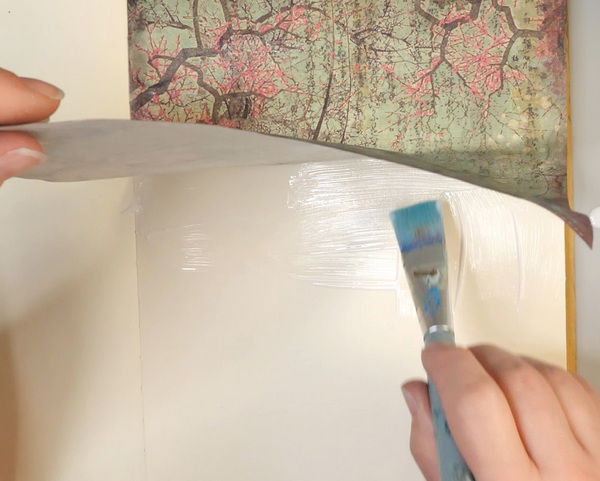
An easy way to add Japanese papers to your art journal is by adding matte medium to the surface of your journal page. Simply add the Japanese paper and add matte medium on top. This seals the paper to the surface. Work in sections if you are adding a large piece of washi paper to prevent wrinkles.
The benefit of the washi paper is that it is stronger than tissue paper and napkins, so it is an ideal medium for the art journal. For more information on how to decoupage in an art journal, click here.
Art Journal Pages with Japanese Papers
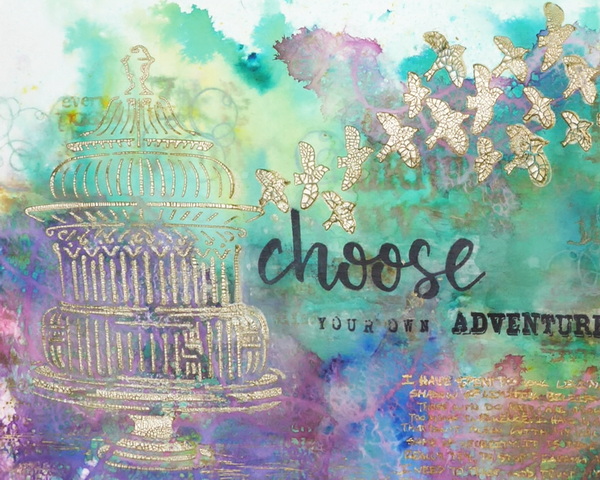
When using washi as art journal papers, you can get a variety of effects. For this page, I started with a layer of watercolor paint. I added tissue weight washi paper to the surface with matte medium. One difference is that I added the matte medium and pushed the washi tissue into it without adding another coat on top. This allowed me to add watercolor to the washi paper which absorbed into the fibers.
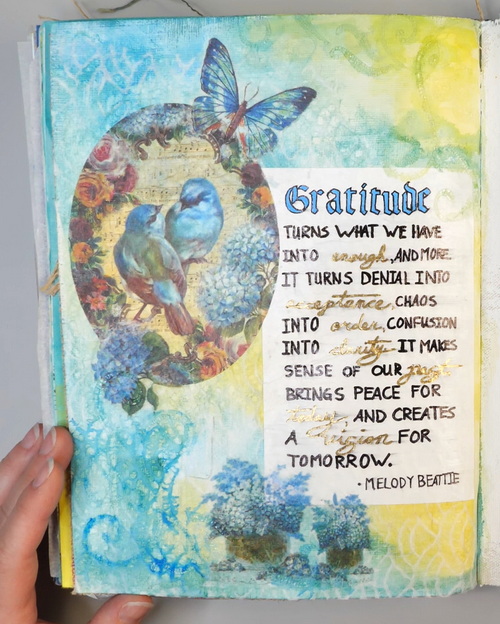
For this page, all the bird and flower images were either cut or torn from Japanese paper. The cut images have a very strong edge, which gives a different look to the images. Tearing over cutting is my preference because the matte medium will make the torn edges of the washi paper disappear.
I also tried using the Tomoe River Paper on this page, but without good success. The Tomoe paper works beautifully for writing with a permanent pen, but I should have let it dry overnight. When I added the Tomoe River paper to the page with matte medium, it smeared the ink, and it wrinkled the paper.
This was an important lesson for me. Be aware of the properties of the washi before adding it to your art journal. Not all Japanese papers have the same properties, so test the paper before adding it to your project.
Questions?
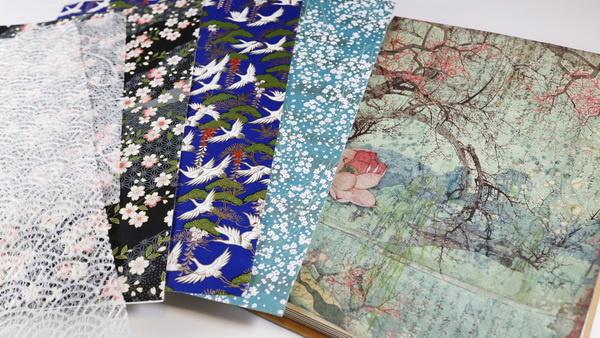
Do you have any questions about Japanese paper or how to use it in an art journal page? There is a large variety of washi papers available, which gives us so many exciting creative possibilities. I hope that this has given you some ideas on how to use this unique and beautiful paper in your next art journal project.



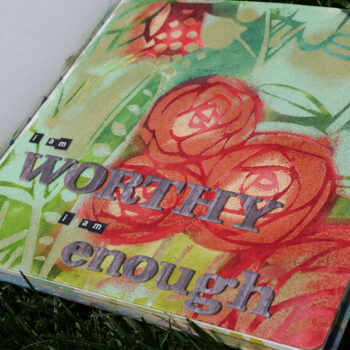
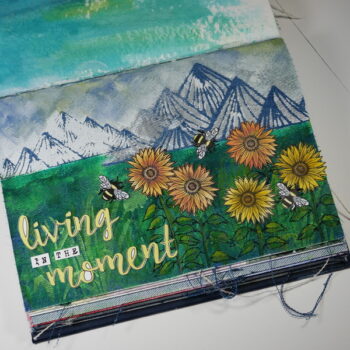
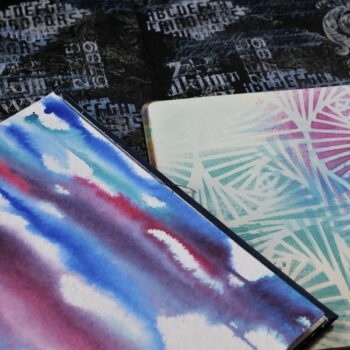

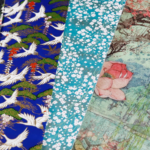


2 Comments
Graciela
Hi! I love Japanese papers kraft 🥰 Lately I am looking for igawa and kumagai papers, but I don’t find any information about them anywhere. Did you hear about it?
Best regards 😊
Nadine Milton
The Japanese Papers are amazing! Check out the Japanese Paper Place (https://www.japanesepaperplace.com/) they are a distributor but have a lot of information on Japanese Paper. I’m in Canada, so if you’re looking for someone in Canada who ships paper, check out the The Paint Spot. It was actually through The Paint Spot that I was able to take a free class on Japanese Paper taught by the Japanese Paper Place. Even if you don’t order from them, they have some videos and other resources on Japanese paper that I hope will help you.